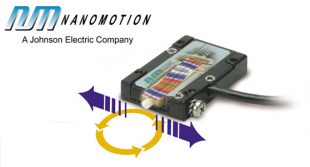Optical Measurement | Light Measurement | Remote Sensing
Piezo Motion Solutions for Spectroscopy Applications

Motion Solutions for Optimizing Spectral Scanning
Our partner Nanomotion provides motion solutions for a broad range of spectroscopy applications, including Raman, mass spectroscopy, hyperspectral, optical and others. The ability to provide constant velocity with low angular error is an enabling capability for new generations of smaller and more precise spectrometers. Based on their piezo technology, Nanomotion designs and manufactures a variety of standard and OEM modules to satisfy a wide range of application requirements to optimize the performance of spectrometers. Depending on requirements, modules are configured for ground based stationary spectrometers, hand-held portable spectrometers and even flight-rated devices for counter measure devices and airborne analysis.
Motion control in Michelson Interferometers
At the core of a Fourier Transform (FTIR) Spectrometer is a Michelson interferometer that dictates the precise scanning of a mirror to collect high resolution spectral data over a wide spectral range. These mirrors must move with precise velocity control and low angular error in order for the spectral measurement to be accurate. Nanomotion’s piezo motors and small FB piezo stages excel at satisfying the motion performance required for Michelson interferometric-based spectrometry.
- Velocity ranges from 0.03mm/sec to 30mm/s
- Velocity uniformity to 0.25%
- Angular accuracy to 10µrad over 10mm travel
- Operating temperatures from -10°C to +50°C
OEM designs for hand-held spectrometers are supported by Nanomotion’s small modules, based on their Edge & Edge-4X motors. Modules designed as small, light-weight & power-efficient solutions can meet the most demanding requirements.
For more information on Nanomotion’s piezo motors and stages, please visit:
Motion control Fabry-Perot Interferometers
An alternative to a Michelson interferometer based spectrometer is a Fabry-Perot interferometer. A Fabry-Perot interferometer is based on a pair of partially silvered glass optical flats that are typically spaced a few millimeters apart. This principle relies on the phenomenon of multiple beam interference that arises when light shines through a cavity bound by two reflective parallel surfaces. When the light encounters one of the surfaces, a portion of the light is transmitted out and a portion is reflected back. Piezo actuated flexures are used to maintain the parallelism. The pair of optical flats are aligned with a small travel flexure assembly, configured into a tripod with 3 piezo axes. Each axis has a capacitive sensor for feedback and travel up to 50µm.
Nanomotion’s TFM platform can provide scanning at 1kHz, to analyze gases and materials for threat detection and survelillance. Watch a simulation of the TFM platform in motion:


